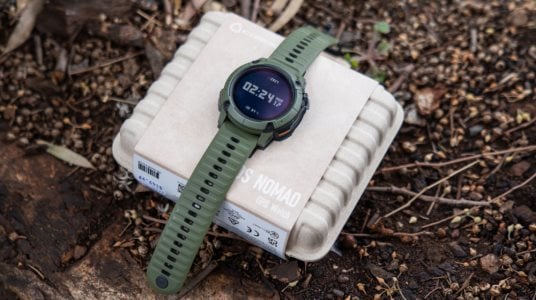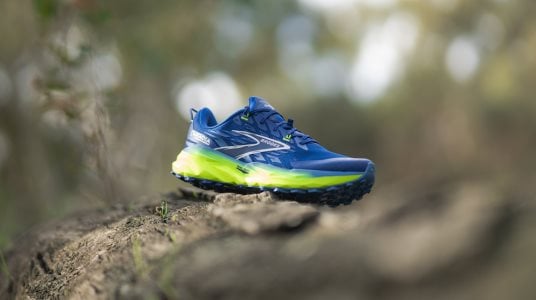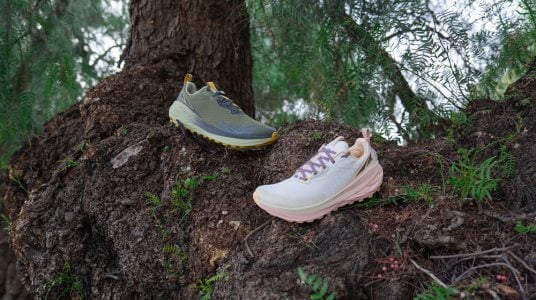Trail Running: Finding Your Grip
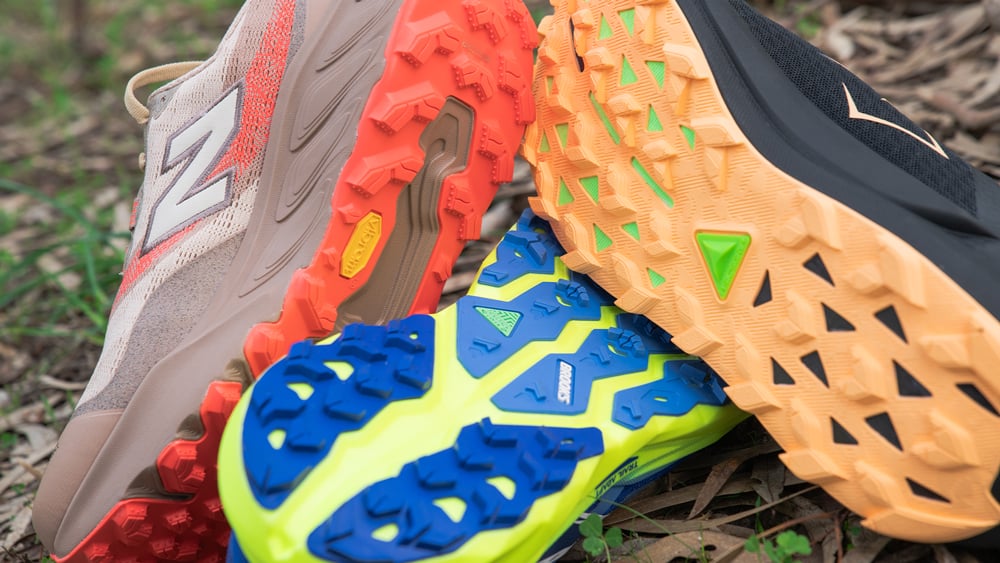
Understanding the outsole of your trail running shoes is essential when making your shoe selection. The outsole connects you to the terrain, influencing traction, grip, comfort and overall performance. In this guide, we'll break down the essentials: lug depth, distribution, and compound, helping you choose the right pair for you.
Lug depth: grip that goes deep
Lug depth refers to the height of the tread patterns (lugs) on the outsole of a trail running shoe.
Shallow lugs: 2.5 - 3.5mm
These lugs are commonly found on road-to-trail shoes and perform best on hard-packed surfaces. In my opinion these provide a good balance of grip and smooth transitions, making them ideal for those transitioning from pavement to smooth trails. Some examples would be the Hoka Challenger ATR 8, Nike Pegasus Trail 5, and On Cloudsurfer Trail 2.
Shallow lugs can also be found in lightweight, race-ready shoes. These designs help reduce weight and enhance speed without sacrificing too much grip. Some options in this category include the Brooks Catamount 4, On Cloudultra Pro and the Asics MetaFuji Trail.
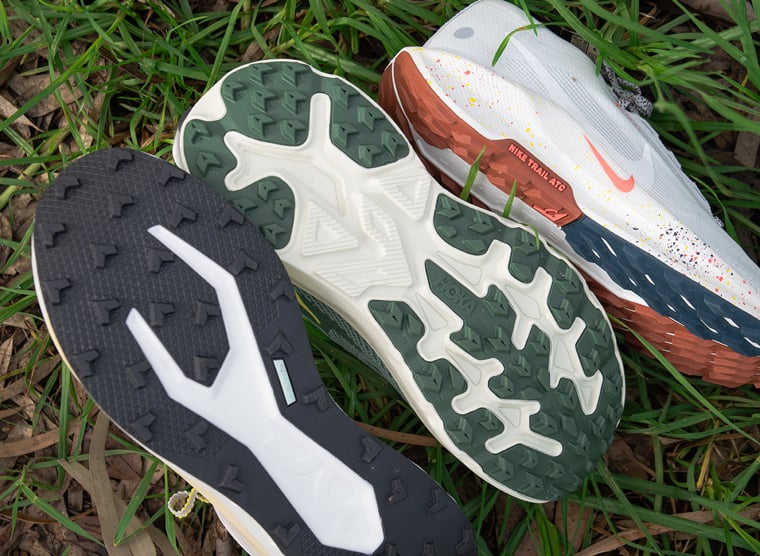
Versatile lugs: 4 - 4.5 mm
This depth provides an excellent all-around option. Personally, I find that shoes with this lug depth can handle a variety of surfaces, ranging from packed dirt to gravel and even more technical terrain, without being too aggressive or heavy. This versatility makes them ideal for runs where the terrain can change rapidly and you encounter a bit of everything. Some solid choices in this category include the Salomon Genesis, Asics Trabuco 13, and Brooks Cascadia 19.
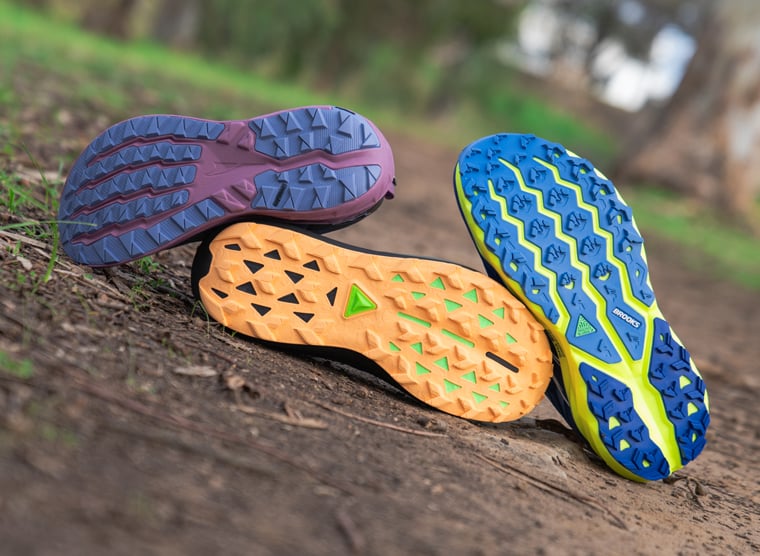
Deep lugs: 5mm +
For loose or muddy trails, deeper lugs are your best bet. Their aggressive patterns allow them to dig in and provide excellent traction, which translates to more stability and confidence on tricky terrain. Some top choices include the Salomon Speedcross, Saucony Peregrine 14, and Hoka Speedgoat 6.
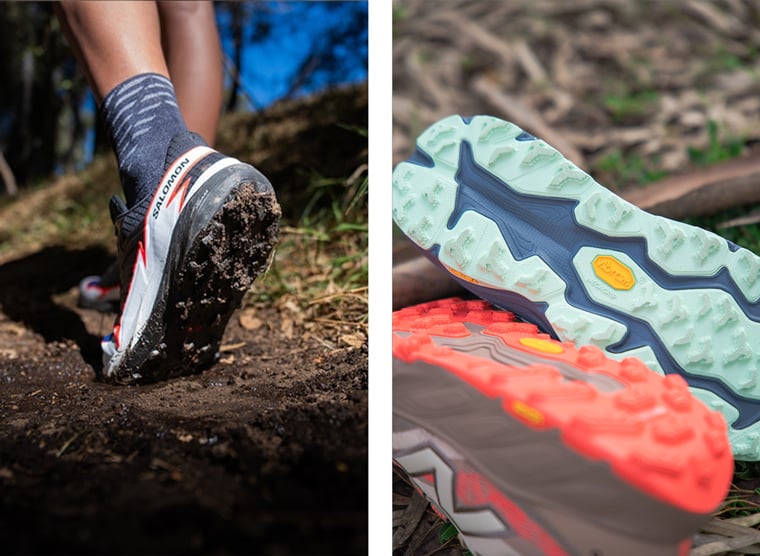
Lug distribution: spacing makes a difference
Lug distribution refers to how the lugs are arranged on the outsole. This can greatly affect traction and performance on various surfaces.
Uniform distribution
Shoes with evenly spaced lugs provide reliable traction, making them suitable for general trail running where you may encounter diverse terrains.
Aggressive patterns
If you're dealing with loose or muddy trails and soft surfaces, look for shoes with aggressive lugs and deeper, more spaced patterns. These designs allow the shoe to grip and effectively clear mud, ensuring better performance in challenging conditions.
Shallower, closely spaced lugs
Shallower lugs that are closely spaced perform better on hard-packed paths. They deliver the right amount of grip without being overly aggressive, making them perfect for faster runs on stable surfaces.
Outsole compound: material behind the magic
Finally, let’s discuss outsole compounds. The material used affects durability, grip, and overall performance.
Outsole compounds
Softer compounds offer better grip, particularly on wet surfaces, but may wear down more quickly. Harder compounds are more durable and ideal for rocky trails, though they might not offer a very good grip in slippery conditions.
Vibram has long been the industry gold standard, with many brands sourcing or designing their outsoles in collaboration with them. If you see shoes with a Vibram outsole, you can generally expect good grip and durability. Within Vibram, there are multiple rubber compounds and designs (e.g. Megagrip, LiteBase, Traction Lug) that cater to specific needs.
However, many brands have developed their own proprietary compounds over time. Companies like Salomon, Asics, Brooks and On have created unique blends - some of them work better than others but generally speaking they offer a good balance of grip and traction on different terrains/conditions.
While brands like Hoka, New Balance, Mizuno, and Nike often use Vibram in their higher-end or more specialised models and their own compounds in the rest of their line up.
Considerations
While traction — how well the lugs penetrate the surface is essential, grip, which is influenced by the outsole compound, also plays a vital role. For example, a shoe with a sticky outsole may struggle in deep mud if its lugs are only 2mm deep and closely spaced. While deeper lugs excel in softer conditions, they may not be ideal for hard-packed trails.
Lug distribution, meanwhile, is just one piece of the puzzle when it comes to outsole performance. Factors like lug shape, lug direction, and specific outsole features also play crucial roles. These elements work together to help the shoe perform effectively across varying terrains.
The combination of lug depth and distribution won't determine how well a shoe handles different conditions. As we've mentioned in previous blogs, elements such as stack height and overall shoe design contribute significantly to its performance. This highlights that all aspects of the outsole and midsole structure matter in adapting to diverse surfaces.
Seb’s final thoughts
Personally, most of my trail running shoes have lug depths ranging from 3.5mm to 4.5mm. I’ve found this depth works best for me and performs well on the types of trails I usually run. Living in Adelaide, the trails are typically hard-packed and not overly technical, and even in winter, they rarely get muddy. Because of this, I tend to avoid shoes with 5mm lugs, as they feel too bulky or clunky on more compact surfaces.
That said, personal preference plays a huge role. Some runners may prefer shoes with deeper lugs and have no issues with them, while others might opt for road-to-trail shoes for all their runs and find them effective. Ultimately, there’s no one-size-fits-all approach; it’s all about what works best for you. It all depends on the terrain you run on, your running style, and your personal preferences. The goal is to find a trail shoe that feels comfortable and performs well in the specific conditions you’ll encounter. Terrain and environmental factors are crucial in determining the best trail shoe for your individual needs.
About the author
Seb Lopez - Trail Runner & Photographer
I’m passionate about trail running, hiking, adventure racing, and the outdoors in general. My favourite runs are long days spent with mates, exploring new places.
I also appreciate how different shoes allow me to connect with the terrain in unique ways and how that affects the running experience. When I’m not out on the trails, you’ll probably find me behind the camera as a sports photographer. It’s great to be on the other side and see the sport from a different angle.
